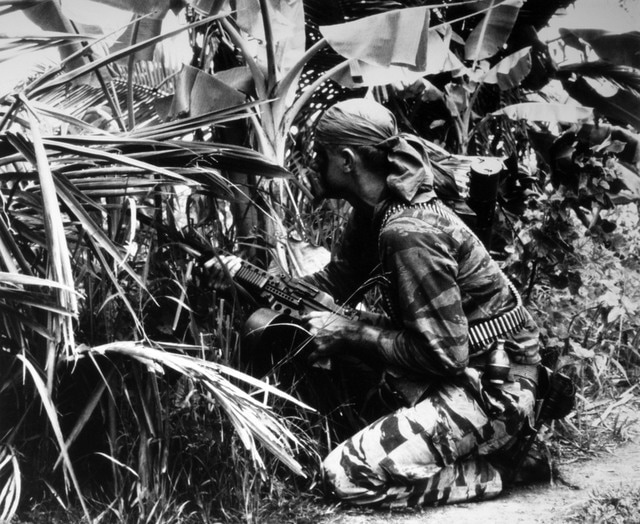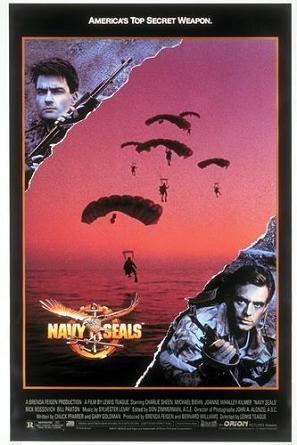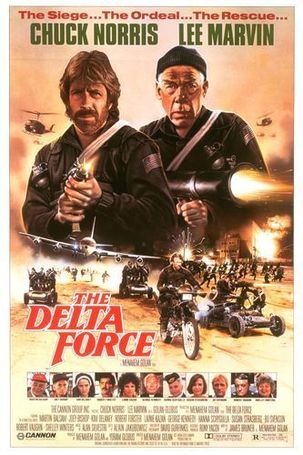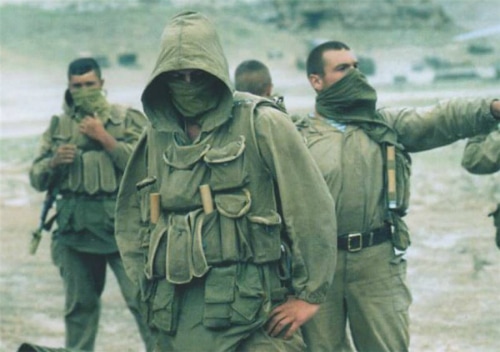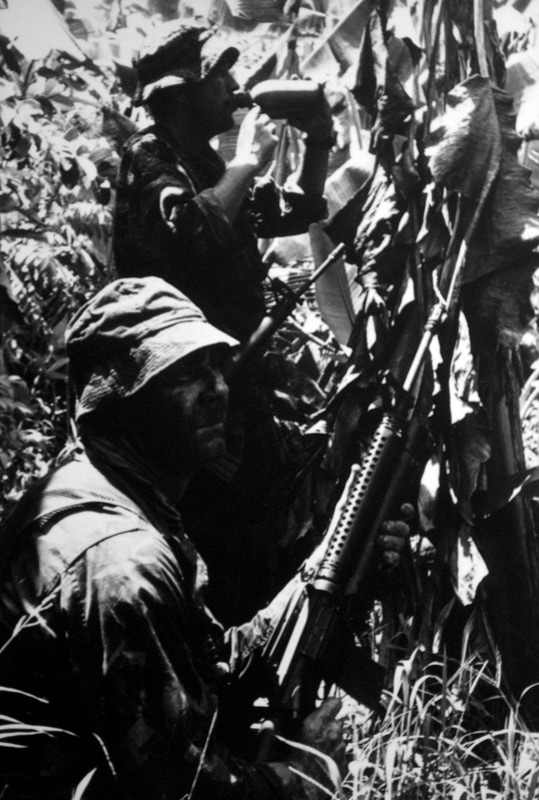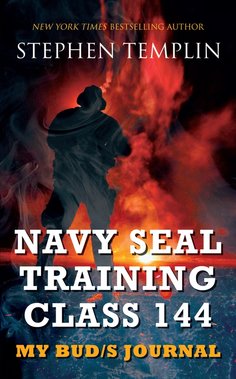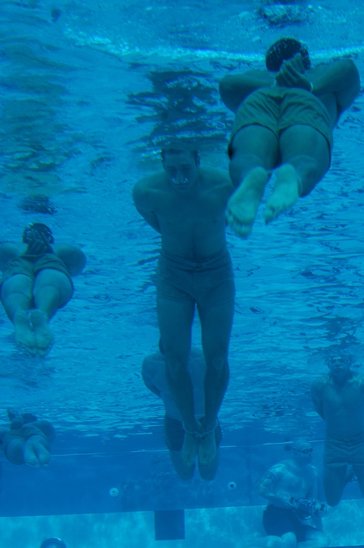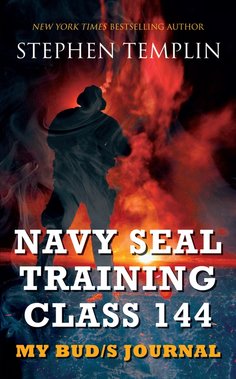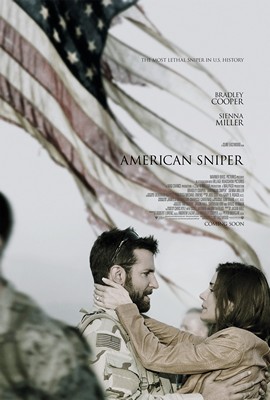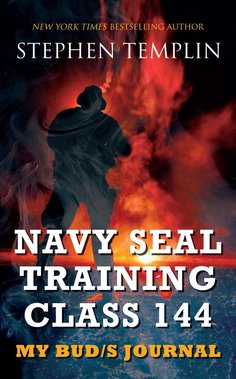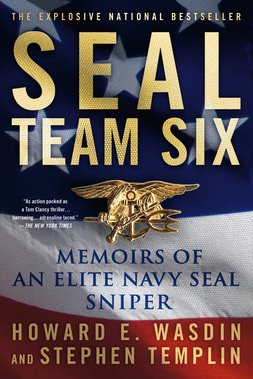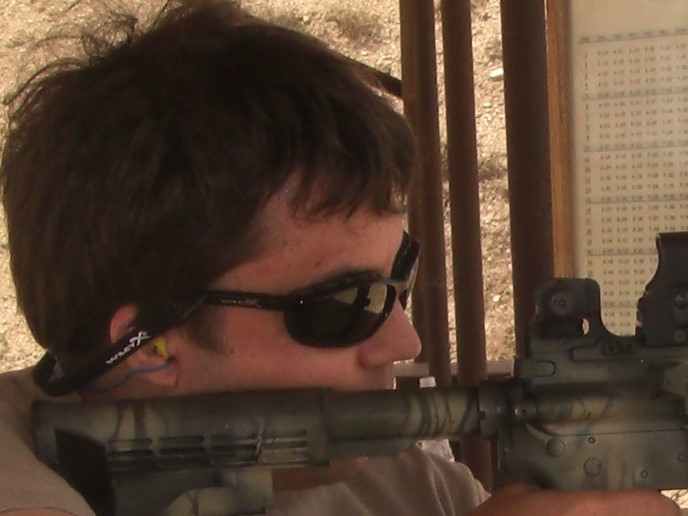|
December 31, 1986, I arrived at the Naval Special Warfare Center in Coronado, California to begin BUD/S training. The place seemed to have died for the holidays, so I slipped in mostly unnoticed. I could've waited to report later, but I was too anxious. On Friday, January 2, 1987, SEAL Master Chief Rick Knepper helped my classmates and I off to a proper start. He looked like an ordinary guy in his forties, calmly leading us in calisthenics on the beach late in the afternoon—we grunted and groaned, but he didn’t seem to break a sweat. Some guys knew about his combat experience and some didn’t.
Rick Knepper served in Vietnam with SEAL Team One, Delta Platoon, 2nd Squad. Knepper’s squad thought they knew about Hon Toi, a large island in Nha Trang Bay. From a distance, the island looked like a big rock sitting in the ocean for birds to take a crap on. But two Viet Cong (VC), tired of fighting and being away from family, defected from the island—leaving a VC camp behind. Knepper’s squad of seven SEALs inserted into the island by boat under darkness—not even the moon shone. Never ones to take the easy way, 2nd Squad free-climbed a 350-foot cliff. After reaching the top, they lowered themselves into the VC camp. The seven-man squad split into two fire teams, taking off their boots and going barefoot to search for some high value targets (HVTs) to snatch. But the VC got the drop on Lieutenant (j.g.) Bob Kerrey’s fire team. A grenade landed at his feet and exploded, slamming him into the rocks and destroying the lower half of his leg. The lieutenant’s fire team fought back while he called in the other fire team, catching the VC in a deadly crossfire. One SEAL, a hospital corpsman, lost his eye. Four of the enemy tried to escape but the SEALs cut them down. Three VC stayed to fight—but didn’t live to fight again. One of the SEALs put a tourniquet on Lieutenant Kerrey’s leg. The squad snatched several VIPs along with three large bags of documents (some including a list of VC in the city), weapons, and other equipment. Lieutenant Kerrey continued to lead Rick Knepper and the others in his squad until they were evacuated. The intel they got from the documents and HVTs gave critical information to the allied forces in Vietnam. Lieutenant Bob Kerrey received the Medal of Honor and would later become a senator and governor of Nebraska. Although others still talk about that op, I never heard Master Chief Knepper talk about it or any other. He served as a mentor to my classmates and me. Without his taking us under his wing, we would’ve been left on our own until the rest of the guys arrived and our BUD/S class officially formed. And I was going to need all the help I could get. Some people ask, "Why do we always hear about Navy SEALs and never about Delta Force?" A difficulty in answering is that this question compares apples to oranges. SEAL Team Six and Delta Force serve under the Joint Special Operations Command (JSOC), but the other SEAL Teams do not. While it's tough to become a SEAL, it's even tougher to earn a spot under JSOC. If people want to compare Navy SEALs to Army units, it would be more appropriate to compare SEALs with Special Forces or Rangers--the first major special ops book on these units was Robin Moore's 1965 The Green Berets, which became a #1 bestseller in the US. In 1976, Benjamin Schemmer wrote The Raid, a Green Berets attempt to rescue 61 US POWs north of Hanoi, Vietnam. If one were to compare SEAL Team Six with Delta Force, the first biography came from Delta Force's founder Charlie Beckwith, entitled Delta Force. In 1986, Chuck Norris starred in an action movie with the same name. And the first hit TV show was also about Delta Force (2006-2009), called The Unit. It wasn't until 2017 that a TV series was made about SEAL Team Six, called Six. Of course there have been books like Richard Marcinko's Rogue Warrior and the movie Navy SEALs starring Charlie Sheen, but these came after the Delta Force book and movie. The 1999 book, Blackhawk Down, told much about Delta Force and the Rangers' role in the Battle of Mogadishu, but little was said about SEAL Team Six's role. Although in 2007, Navy SEAL Marcus Luttrell published his autobiography, Lone Survivor, in 2008, Delta Force's Dalton Fury published Kill bin Laden, about the Battle of Tora Bora. In 2011, after SEAL Team Six took down bin Laden, Americans wanted to know more. This knowing provided closure for many regarding the tragic September 11 attacks. Books like SEAL Team Six: Memoirs of an Elite Navy SEAL Sniper (2011) and American Sniper (2012) became bestsellers. Even so, too much information can endanger current operators, their missions and tactics. The Department of Defense (DOD) cracked down on Mark Owen, the author of No Easy Day (2012), for not clearing his manuscript with them. Although these men are heroes, it has become increasingly important for them to clear their stories with the DOD. In short answer to the original question, although recently much media attention has been given to Navy special operators, Army special operators have a history of receiving media attention, too. I trained with Delta Force veteran Larry Vickers, and below he analyzes the Collateral shootout (head placement is an excellent tip) Below is my 2014 interview with Poland's largest news website: Onet. (Original Polish article is here.)
Q: Mr. Templin, the situation in Ukraine is very tense. This is the greatest threat to peace in Europe since the democratic revolution in 1989, and a great challenge for Western politicians. But what does the crisis in Ukraine looks like from the point of view of a military veteran - a person not involved in the political decision-making? A: Thank you for talking with me, Przemyslaw. I agree that Russian intervention in Ukraine is one of the greatest threats to peace in Europe since the Revolutions of 1989, which as you know, began with Poland’s rejection of Communism, and others in Europe joined that rejection. I think that for many Americans, the fall of the Berlin Wall was particularly symbolic—for American veterans, it symbolized a great victory in the Cold War, leading to Soviet dissolution. Now we are in danger of Russia controlling other countries again. Q: Mr. Templin, how do you assess the reaction of Western countries, especially the United States, to the Russian aggressive steps towards Ukraine? Is the reaction adequate in your opinion? A: First, I think it’s important for the West to understand that President Putin is hungry for control—we’ve seen that in his attitude towards ruling his own country and his attitude towards surrounding countries. I believe his goal is long-term and far-reaching, which is certainly of concern for Poland and many other countries. Former U.S. Secretary of Defense Robert Gates has said that direct U.S. military action is not a real option, and that some of the current sanctions and planned sanctions may have some short-term effects, but they will not be effective in the long term for stopping Putin. The West needs a long-term plan, and additional military presence in Estonia, Latvia, and Lithuania is smart. Gates also says we should become more militarily involved with Poland, and I agree. In addition, I think his advice for America and Europe to press hard for a southern pipeline to send gas to “Europe outside of Russia and Ukrainian territorial space” is a wise long-term strategy for fighting the spread of Putin control. Q: Is Ukraine threatened by Russian direct military intervention in your opinion? A: Yes. Taking control of Crimea was a big win for Putin. I don’t know how we can take it away from him, or why he would let it go. The Crimea is Putin’s now. And he will not stop there. I think Russia is engaging in covert military actions in Ukraine and Putin would like to expand those actions. Q: Republicans in Congress have criticized President Barack Obama's policy towards Russia, claiming that this policy is "indecisive" and "weak". Did the U.S. authorities make a mistake trying to build partnership relations with Russia, referred earlier to as the "reset"? A: U.S. President Theodore Roosevelt said, “Speak softly and carry a big stick.” President Reagan used this attitude well in dealing with the Soviet Union—he dealt aggressively with the Soviet Union but had the capacity for warmth. During Reagan’s time, the world was also helped by the attitude of Soviet Union President Mikhail Gorbachev: glasnost (openness) and perestroika (restructuring). I think Reagan’s show of warmth for Gorbachev was not a mistake, and later efforts towards a “reset” were not a mistake; however, I think President Barrack Obama is mistaken in “speaking loudly and carrying a small stick” especially in regards to Putin, who seeks power more than glasnost or perestroika. Q: Should the crisis in Ukraine and aggressive Russian policy induce the United States to increase its military presence in Europe? Previously, we had to deal with withdrawing American troops from Germany for example. Should this policy change now? A: Again, I think additional military presence in that region is smart. And we also need to become more militarily involved with Poland. Q: Does Russia's policy towards Eastern Europe threaten to undermine U.S. leadership on a global scale? A: Leadership requires more action and less reaction. Set a long-term plan and stay with it. An important part of Reagan’s plan included the Strategic Defense Initiative. President Obama needs a major long-term plan in Eastern Europe. He also needs such a plan in Asia, dealing with China. Both Russia and China have been emboldened by the perceived leadership weaknesses of Obama. Q: Poland is not a military superpower but gave its support to the new authorities of Ukraine and led to the involvement of the European Union in the process of building democracy in Ukraine. How do you assess the action taken by Poland in the on-going crisis in Ukraine? A: I think Poland has done an amazing job domestically and as a member of the European Union and NATO. You have truly fought the negative effects of Russian rule, most recently in Ukraine, but you shouldn’t have to fight alone. Obama needs to do more. Q: Should permanent bases for American ground forces be built in Poland in your opinion? So far in Poland we have American F-16 fighter jets and small contingent of ground forces. Should American bases be built also in other countries of Central and Eastern Europe, such as the Baltic States and Romania? A: I think NATO commanders, with more leadership from the U.S., are best equipped to answer the specifics of military presence, but I agree that increased military presence, “a big stick”, is needed in that region. I believe this is also true in Asia with regard to China. Q: What, in your opinion, would be the best military support, which the United States could provide for Poland? What military resources would be necessary to "contain" Russia? A: An increased U.S. military presence is needed in Poland, but President Obama needs to show more leadership through NATO in order to create an effective presence. And this must be coordinated with a long-term plan that will break Putin’s back, for example, a southern gas pipeline to countries in that region. Q: Poland and the United States are strategic allies. Therefore, shouldn't Poland and the United States strengthen bilateral military relations (in addition to their relations within NATO)? How such relationships could be strengthened? A: Poland has been one of the strongest European supporters of the U.S., but unfortunately Obama has shown ignorance about Poland’s situation during World War II, broken his promise to include Poland in the Visa Waiver Program, and displayed weakness in regards to Russian aggression in Ukraine. With such missteps, it’s difficult to strengthen relations. Now I think what is most needed is new leadership in the White House, a new commander-in-chief. Until that happens, I hope Putin is unable to gain new ground in Ukraine and elsewhere. Poland deserves better; the world deserves better. [Photo courtesy of Aleksey Yermolov] When SEAL Team Six operators run with a rifle, they're often running "muzzle up." In contrast, Delta operators usually run "muzzle down." Which is better? In the next three videos, Kyle Defoor (SEAL) and Paul Howe and Kyle Lamb (Delta) discuss their views: Depending on the situation, I've used muzzle up and muzzle down, and environmental awareness is critical: don't aim at anything you don't wish to destroy/kill. If I'm loading onto a boat, I don't want to put a hole in the deck. Likewise, if I'm loading onto a helo, I don't want to put a hole in a main rotor blade. Also, I wouldn't want to aim my muzzle up at my buddies on the floor above me. On the other hand, trekking through deep water or mud, it can be practical to carry the weapon up out of the muck, Both muzzle up and muzzle down can be used to run fast as is seen with Defoor's example above and Pat McNamara's (Delta) example below: As shown in the photo below, SEALs have been going "muzzle up" since Vietnam: But they also used muzzle down.
Another important factor to consider is training: follow the rules of the instructor/range. If the instructor is a SEAL, muzzle up will probably be allowed more, but if the instructor is a Delta operator, he'll likely expect much of your movement to be with the muzzle down. When in Rome, don't piss off your instructor. In summary, situational awareness and safety are key in deciding whether to go muzzle up or muzzle down. In a classroom at the Naval Special Warfare Center, Instructor Stoneclam stood next to a 13-foot long, black, rubber boat resting on the floor in front of my class.
“Today, I’m going to brief you on Surf Passage. This is the IBS. Some people call it the Itty-Bitty Ship, and you’ll probably have your own pet names to give it, but the Navy calls it the Inflatable Boat, Small. You will man it with six to eight men who are about the same height. These men will be your boat crew.” He drew a primitive picture on the board of the beach, ocean, and stickmen scattered around the IBS. He pointed to the stickmen scattered in the ocean. “This is you guys after a wave has just wiped you out.” He drew a stickman on the beach. “This is one of you after the ocean spit you out. And guess what? The next thing the ocean is going to spit out is the boat.” Instructor Stoneclam used his eraser like a boat. “But now the 170-pound IBS is full of water and weighs about as much as a small car. And it’s coming right at you here on the beach. What are you going to do? If you’re standing in the road, and a small car comes speeding at you, what are you going to do? Try to outrun it? Of course not. You’re going to get out of the road. Same thing when the boat comes speeding at you. You’re going to get out of the path it’s traveling. Run parallel to the beach. “Some of you look sleepy. All of you drop and push ‘em out!” Later, the sunshine dimmed as we stood by our boats facing the ocean. Bulky orange kapok life jackets covered our Battle Dress Uniforms (BDU’s). We tied our hats to the top button hole on our shirt collars with orange cord. Each of us held our paddles like rifles at the order-arms position, waiting for our boat leader to return from where the instructors briefed him and the other boat crew leaders. Our group was the “Smurf Crew”—the boat with the shortest men. Our boat leader quickly returned and gave us orders. With boat handle in one hand and paddle in the other hand, we raced with our boat into the water. The other boat crews raced too. “One’s in!” our boat leader called. Our two front men jumped into the boat and started paddling. I ran in water almost up to my knees. “Two’s in!” Martinez and I jumped in and started paddling. “Three’s in!” The third pair jumped in and paddled, followed by our boat leader, who used his oar at the stern to steer. “Stroke, stroke!” I dug my paddle in deep and pulled back as hard as I could. I glanced over at another boat where the Egyptian officer, had a big smile on his face like he was on the Catalina cruise. His paddle leisurely slapped the top of the water. In front of us, a seven-foot wave formed. “Dig, dig, dig!” Our boat climbed up the face of the wave. I saw one of the boats clear the tip. We weren’t so lucky. The wave picked us up and slammed us down, sandwiching us between our boat and the water. As the ocean swallowed us, I swallowed a mouthful of boots, paddles, and cold saltwater. Eventually, the ocean spit us onto the beach along with most of the other boat crews. The instructors greeted us by dropping us. With our boots on the boats, hands in the sand, and gravity against us, we did pushups. Then we gathered ourselves together and went at it again—with more motivation and better teamwork. This time, we cleared the breakers. Back on shore, a boyish-faced trainee from another boat crew, picked his paddle up off the beach. As he turned around to face the ocean, a boat raced toward him sideways. Instructor Stoneclam shouted in the megaphone, “GET OUT OF THERE!” Boy-Face ran away from the boat, just like the instructors told us not to. Fear has a way of turning Einsteins into amoebas. “RUN PARALLEL TO THE BEACH! RUN PARALLEL TO THE BEACH!” Boy-Face continued to try to outrun the speeding vehicle. The boat came out of the water and slid sideways like a hovercraft over the hard wet sand. When it ran out of hard wet sand, its momentum carried it over the soft dry sand until it hacked Boy-Face down. Instructor Stoneclam, other instructors, and the ambulance rushed to the wounded man. Doc, one of the SEAL instructors, started first aid. I never heard Boy-Face call out in pain. The boat broke both his legs at the thigh bones. When the day finished, we hit the hot showers, but Parsons, the punker with Billy Idol hair, grabbed his surfboard and headed back for more: “Those waves are thrashin’!” You can read the rest of my story in Navy SEAL Training Class 144: My BUD/S Journal. WARNING: Do not try any of the activities described here on your own. Even with the supervision and guidance of active-duty SEAL instructors, serious injuries have resulted. Without this experienced supervision and guidance, permanent injuries and death can result.
I’d always thought drowning is one of the worst ways to die. The sun lay buried in the horizon, as my class marched double-time through the Naval Amphibious Base at Coronado, California. Wearing the same camouflage uniforms, all of us sang out in cadence looking confident, but the song of our voices was hollow. Wake up, wake up, N.A.B. We’ve been up since half past three Runnin’, swimmin’ all day long That’s what makes a tadpole strong Whooyah hey, runnin’ day Whooyah hey, easy day Our anxieties manifested themselves as lingering mists from our warm breath hitting the winter air. The noise of our combat boots struck the black asphalt with melancholy. Most of the men in my Basic Underwater Demolition/SEAL (BUD/S) class were about 21 years old—I was only 19. Together we were a smorgasbord of life: Egyptian army officer, MIT graduate, surfer punk, etc. Each of us had different reasons for becoming Navy SEALs: show patriotism, become king of the surfers, etc. But on that cool winter’s morning, we all had one thing in common: dread. We arrived at the pool located at Building 164 and stripped down to our UDT swim shorts. The SEAL instructors watched us with shark eyes. We grouped ourselves in pairs with our swim buddies. My swim buddy asked, “Do you want to go first or should I?” “I want to get this over with,” I said. We stood at the deep end of the pool. Goose bumps pricked our flesh as each of our partners tied us up with high strength cord. My partner tied my feet together. “Tie it good,” I said. “I don’t want to have to do this twice.” After finishing the knot, he proceeded to tie my hands behind my back. Stoneclam wore his khaki UDT (Underwater Demolition Team) shorts and a dark blue t-shirt. The t-shirt had a thin yellowish-gold border on the sleeves. Two cartoon-like figures were on the left breast: a frog holding a burning stick of dynamite in its hand and a seal carrying a knife in its mouth. Written in small, yellowish-gold letters were the words: UDT/SEAL Instructor. Kneeling down on one knee, he touched the water reverently as if to consecrate it for us. He climbed up to the lifeguard chair and took his ritualistic position. “You are all going to love this. Drown-proofing is one of my favorites. Sink or swim, sweet peas.” Half of my class stood at the edge of the deep end with our feet tied together and hands tied behind our backs. Our swim-buddies stood behind us. Instructors were joking, but it was all a peripheral blur to me. I can’t let them get inside my head. Focused on calming my respiration and heartbeat. Instructor Stoneclam said, “When I give the command, the bound men will hop into the deep end of the pool. You must bob up and down twenty times, float for five minutes, swim to the shallow end of the pool, turn around without touching the bottom, swim back to the deep end, do a forward and backward somersault underwater, and retrieve a face mask from the bottom of the pool. “If your ropes come undone, you must start over from the beginning. If your ropes come undone a second time, you fail. If you break your ropes, you pass—but don’t try it. I only know of one student who ever broke his ropes. We’ll be watching you to make sure no one cheats.” Standing on the edge of the pool, I should have realized how abnormal all this was. Just doing all that bobbing and swimming and somersaults without my hands and feet tied would be hard enough. My mind focused on how peaceful the water was. My breathing and heart rate slowed. Instructor Stoneclam’s dark eyes probed us. “First group, enter the water.” The smooth surface of the water broke as we jumped in. A flurry of thoughts assaulted me: panicking, suffocating, drowning. Block the negative. Be calm. Avoid the negative. The heated pool is warm. Focus on the warmth. Become one with the water. My classmates and rose and sank at different heights and depths. Some touched the bottom and were already rising to the surface. A negative thought wrestled with me: the guys at the top are going to breathe while I’m still down here. I waited helplessly for my feet to touch the bottom. Wait for the breath. Slow it down. Control the rhythm. I imagined soft ballet music. My toes touched the concrete bottom. Don’t shoot out of the water like a missile and draw the attention of the instructors. I gently pushed off. I wanted air, but I couldn’t think about it. My head cleared the surface. I heard screams and saw splashing on the other side of the pool. I closed my eyes and filled my ears with ballet music. My mouth formed a tight circle, sucking a bite of oxygen straight to my lungs. I sank slowly to the bottom. The instructors can’t touch me here. The water is my haven. Pushing off from the bottom again, I opened my eyes and continued to imagine ballet music as my classmates and I continued to rise and fall in our new haven. The Egyptian officer smiled, looking like a brown, oversized water lily. Priest, the surf-punk, made a goofy face at me and wiggled his body like some sort of wacky water worm as he rose upward. I smiled, bobbing up and down in the water wearing my pink tutu. On one of my trips to the surface, I looked over to the commotion at the other side of the pool. One of my classmates thrashed the water trying to get to the edge of the pool. “Help me, I’m drowning! Ahggh!” Instructor Stoneclam used the lifesaving pole to push him away from the edge, “If you were drowning, you wouldn’t be telling me about it.” The panicked guy bit the pole. I got my bite of air and sank down. When I came back up, the panicked student was being helped out of the pool—he had enough of training. After bobbing, I floated for five minutes. Next, I began my dolphin kick along the length of the pool. Keep it slow. Keep the rhythm. I kicked then turned my head to breathe—side-stroke style. Kick-and-breathe, kick-and-breathe. I reached the shallow end of the pool and began making a dolphin-turn right. Parsons was turning left, aimed for a head-on collision course with me. If either of us touched the bottom of the pool, we’d fail. I became anxious and started to lose my rhythm. Parsons dove underneath me as we made our turn. Our bodies scraped each other, but neither of us touched the bottom of the pool. I became more anxious. I dolphined my way back to the deep end. There I bobbed once. I did my forward somersault. I still hadn’t recovered my breathing rhythm after the near-collision with Priest. Most of my classmates had already finished their forward and backward somersaults. Nineteen face masks lay on the bottom of the pool. One-by-one the masks disappeared as each of my buddies grabbed a mask with their teeth and rose to the surface, completing their job. I was the last one in the pool. I could feel Instructor Stoneclam’s eyes on me. I did the backward somersault. My breathing and movement became uncoordinated. The threat of failure attacked me. My chlorine-saturated eyes frantically searched the blurry bottom for a face mask. I spotted one mask on the bottom at the far end of the pool. I can’t make it that far. Suddenly, my blurred vision caught sight of a mask down to my left. My feet touched the bottom—my toes only inches away. I dropped to my knees. I tried to lean over to grab the mask with my teeth. But I had swallowed too much air during my somersaults, and my body floated up before I could bite the mask. My body stopped halfway up. There was no air in my lungs to float me to the top and too much air in my stomach to allow me to sink to the bottom. The taste of chlorine made me want to vomit. Fear stepped aside to let discouragement make its entrance. Discouragement was infinitely more powerful than fear. I felt myself shrinking. I heard voices—my classmates cheering me on. They seemed so far away. I was too weak. I failed. Discouragement smashed me, destroying every particle of human energy from me. The hammer of discouragement rose high in the air, preparing to make its final blow. But I didn’t want it to end this way. I didn’t want to fail. I started to get angry. Angry at fear and discouragement. Angry at Instructor Stoneclam. Angry at anything that would get in my way from succeeding—including myself. My spirit exploded. Its heat and power rumbled through me. The shockwave overwhelmed my senses. My feet kicked rapidly, propelling me upward. I surfaced with half of my body shooting out of the water. I flipped like an angry fish and dove head first into the water, frantically kicking my tied feet. I shot down at the mask, and my forehead smashed into the floor, stopping me. I twisted my head around and clenched the black strap with my teeth. I kicked and wiggled without oxygen, managing to move head-first toward the top. My head felt so dizzy. Complete the mission. I struggled halfway to the surface. My body was heavy. My peripheral vision became grey. I kicked harder. Every part of me craved oxygen as the grey circle around my vision became smaller, darker. My body started to tingle. I felt like I was losing consciousness--getting harder and harder to focus on anything. I managed to poke my head out of the water. Madly, my feet kept kicking. Some classmates started to applaud. “Shut up!” Instructor Stoneclam barked. I refused to stop kicking unless Stoneclam told my swim buddy to help me out, and I refused to let go of the mask. Instructor Stoneclam studied me leisurely. I sucked air and water through my teeth. I figured he could either let my buddy help me out from the pool, or Stoneclam could rescue me when I became unconscious and sank to the bottom. Either way, I wasn’t going to let go of the mask. Instructor Stoneclam told my swim buddy, “Pull him out.” I felt incredible relief as my partner and another student pulled me out. The ground felt strange, and I had to sit down because my legs didn’t support me well. My classmates untied my hands. I felt like a fish, not knowing what to do with my hands except flap the kinks out of my wrists. My head ached. Steam rolled off my wet body. An instructor told me, “I’ve never seen anyone pull their mask out like that. You’ll have to explain your technique.” The other instructors smiled. Instructor Stoneclam barked, “Next!” I helped tie my swim buddy’s feet and hands. “Second group, enter the water,” Instructor Stoneclam said. I no longer thought drowning was one of the worst ways to die. Drownproofing replaced my old fear with a new one: failure without trying everything I can do to succeed. You can read the rest of my story in Navy SEAL Training Class 144: My BUD/S Journal. Clint Eastwood’s American Sniper is reminiscent of a great western, riding at its own pace, in a violent land where gunslinger, or in this case sniper, Chris Kyle risks his own life to save the lives of others. Bradley Cooper gives an eerily realistic performance of Kyle and a fitting tribute to The Legend. Not to be outdone, Sienna Miller stands toe-to-toe with Cooper, as she portrays Kyle’s wife, Taya, who fights to keep Chris grounded to her and their children.
I had read the book, which became one of my favorite SEAL books, and when I saw the first movie trailer and knew that Eastwood was directing, I wanted to see it. The second trailer touched me in a way no other trailer had before, increasing my desire to see the film. I went alone on Christmas Day to the theater in Dallas, the first day of public screenings (limited to Dallas, Los Angeles and New York City), and it was good I had my ticket in advance because, although I showed up early that morning, the screenings for American Sniper were already sold out for the day. Like many of the Eastwood cowboys in film, Kyle appears as a man of not many words who fights in a dusty, treacherous environment. He is sometimes isolated even when there are Teammates and family around: in Iraq behind the scope of his sniper rifle and at home where he feels guilty that he is “going to the mall” when other military personnel are overseas sacrificing so much. Pulling Kyle in seemingly opposite directions are wartime versus peacetime and SEAL Team versus family, reminding me of the dichotomies in Eastwood’s much earlier film, The Outlaw Josey Wales, a personal favorite of mine. Josey Wales was also pulled at by opposite sides: civil war and peacetime, north and south, and being alone versus leading a group. It is challenging to tell a person’s story within the length of a standard-sized book and even more challenging to condense that into film length. Although Jason Hall’s screenplay is accessible to a wide audience, it does not stray too far from the book. I noticed some differences, but they were not so jarring as to pull me out of the viewing experience. For example, the timeline of friend/Teammate Job’s death occurs differently in the film than it does in the book. I liked how Hall’s screenplay focused on what it is like to be a sheepdog protecting the sheep from predators and the toll it takes on Kyle and his family. Cooper’s portrayal of Kyle is so spot-on that it is like Cooper channeled Kyle’s spirit. Although I have never met Kyle, I have seen video of him in various interviews. Cooper and Kyle are similar heights, but Cooper’s portrayal goes way beyond that. His Texas accent, peculiar to a Texan who has spent some time in the military, is amazing. In the combat scenes, Cooper moves calm and purposeful. When fighting house-to-house, he’s a frogman on fire. When he lets his anger out on the weights, that’s really Cooper squatting what looks like 400 pounds—real weights. But like Kyle, especially back in the States, Cooper rounds his broad shoulders and makes himself small, less threatening. Cooper’s acting was so consistent, that I believed I was watching Chris Kyle throughout the film. His relationship with his wife, played by Sienna Miller, comes off as real to me—alpha male and alpha female whose relationship teeters from the awkwardness of meeting for the first time to warm familiarity—then returning to the awkwardness of meeting again after long separation—a testament to the fine acting of Sienna Miller. She also has to relate to a man who is sometimes away at war even when he is at home sitting beside her. I believe Miller’s performance gives insight into Chris Kyle that he could not immediately see without the benefit of her perspective. I would’ve liked a little more military realism in this movie. For example, military units seemed globbed together in a way that makes it difficult to recognize which unit is which. Also, some of the weapons handling, particularly from the large group of actors playing Marines, was less tactical than it should be. For me, the movie Platoon was more militarily realistic than American Sniper. Even so, there was enough realism in American Sniper to keep me invested. For people who want a movie with a jacked-up soundtrack, slick presentation, and Hollywood pacing, they will be disappointed. And for those who are intent on bad-mouthing military men and women, I am not sure why they would see such a movie in the first place—they will be frustrated. This film is quite real, taut, and at its own pace, a tribute to a great patriot. Many people have seen the news and know what becomes of Chris Kyle. For those who have not, be warned and read no further. What follows is a spoiler. After the film ends and the credits roll, a reverent tune is played in memorial to Kyle. Actual footage is shown of his funeral at the Dallas Cowboys stadium and the long procession of cars that headed south for his burial. In the movie theater, one woman lacked the class to stay seated until this memorial piece finished on the screen. She walked out while everyone else in the packed theater sat respectfully. The memorial piece ended and the rest of the credits rolled silently. Some people clapped, and I did not know what to do. Do I keep quiet out of respect for the deceased, or do I applaud a great film and a great warrior? Others seemed conflicted, too. I clapped, as did less than half of the theater. Quiet or applauding, aside from the one woman, I appreciated the audience’s attitude—made me proud to live here. As the credits rolled silently, we filed out of the theater. There was a solemn feeling in the air—a heaviness. I felt some of the loss and the tragedy of Kyle’s passing. My prayers are with his wife, Taya, and their children. Long live the Legend. I strongly recommend that you see American Sniper. The Navy tested it's new Unmanned Underwater Vehicle (UUV) that looks like a shark When Class 143 finally began BUD/S Indoctrination (Indoc) I found out that we would be taking the physical screen test again. I nearly panicked hearing that those who failed would be dropped on the spot. But the fear must’ve motivated me because I passed while others were sent packing. From that point on, it took everything I had to get through the calisthenics of Indoc without being targeted by the instructors for not keeping up. During the pool swims, I always finished dead last. Guys already started to ring the bell—quitting. The beach runs hammered me. Soft sand sucked the energy out of my legs, but waves assaulted me on the hard packed sand. Some guys dropped way behind and others stayed in front with the group. I ran with the guys strung out in the middle. One day, Instructor Benelli ran alongside me. “Do you want to fall behind with the guys walking in the back or keep up with the guys running in front?” I gasped. “Front.” “Run with your thighs and not your lower legs, then. Just pick up your thighs and put them down. Keep your arms loose, so you don’t waste energy. And breathe.” I followed his advice and somehow managed to make my way forward. My former shipmate, Rudy, stayed strong like Clint Eastwood and was almost always up front, giving me someone to catch up to. Other guys, like Howard E. Wasdin, who I met and became friends with in Indoc, fell behind on one run and received personal attention from the instructors while the rest of us hit the showers. In Howard’s case, he never made that mistake again. In contrast, Claude seemed to fall farther behind on every run. I couldn’t understand why. Claude and I had run together before BUD/S, and he’d never had trouble before. But I noticed he didn’t smile anymore. One day he rang the bell, and I never saw him again. After one particularly tough day of training, Howard walked around the barracks asking, “Who wants to go with me for a run on the beach?” I thought he was nuts. “You’re in BUD/S. Isn’t that enough?” What seemed even nuttier to me was that some of the guys actually went. Eventually, even Howard had enough, though, so we’d take care of personal business and have fun on Saturdays, and we'd go to church on Sundays. And so it went. Howard set a positive example for me in BUD/S and was a great friend to me. But when I injured a leg muscle trying to swim with my hands and feet tied while preparing for “drownproofing,” that was the end of our training together. The doctors pulled me out of Class 143. The bad news was that I had to start Indoc all over from the very beginning. But the good news was that I was still in the game. I’d gotten a taste of BUD/S, and I was determined to hook up with Class 144 and kick some ass. You can read the rest of my story in Navy SEAL Training Class 144: My BUD/S Journal. Note: Years later, in 1993, in Mogadishu, Somalia, Howard and three other snipers from SEAL Team Six, along with Delta and others, snatched some of warlord Mohamed Aidid’s top cadre. Aidid’s militia used rocket propelled grenades to shoot down two Black Hawk helicopters. Howard and his buddies fought a hellish battle to get out of the city.
The rest of Howard’s story appears in SEAL Team Six: Memoirs of an Elite Navy SEAL Sniper. |
the pages turn themselves...To get your copy of From Russia without Love, you just need to tell me where to send it. Stephen Templin
Steve is a NYT & international bestselling author. And dark chocolate thief. Categories
All
|
